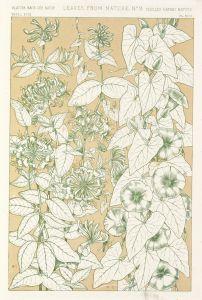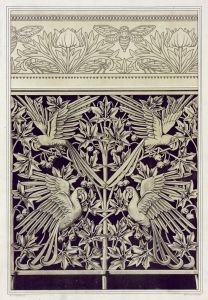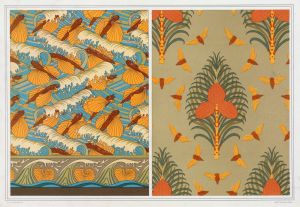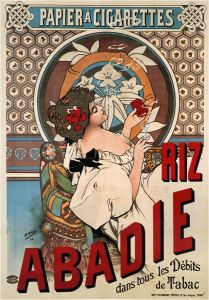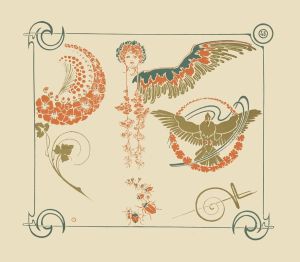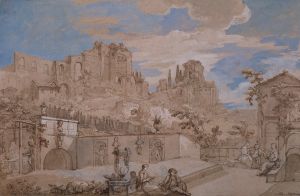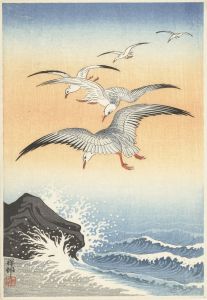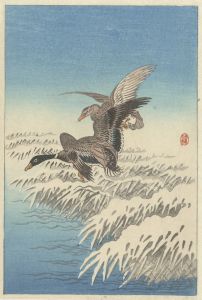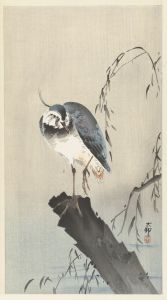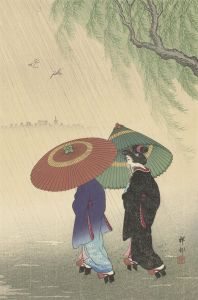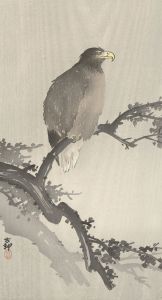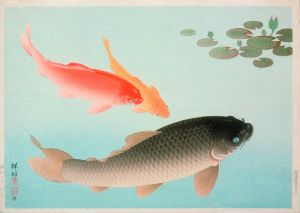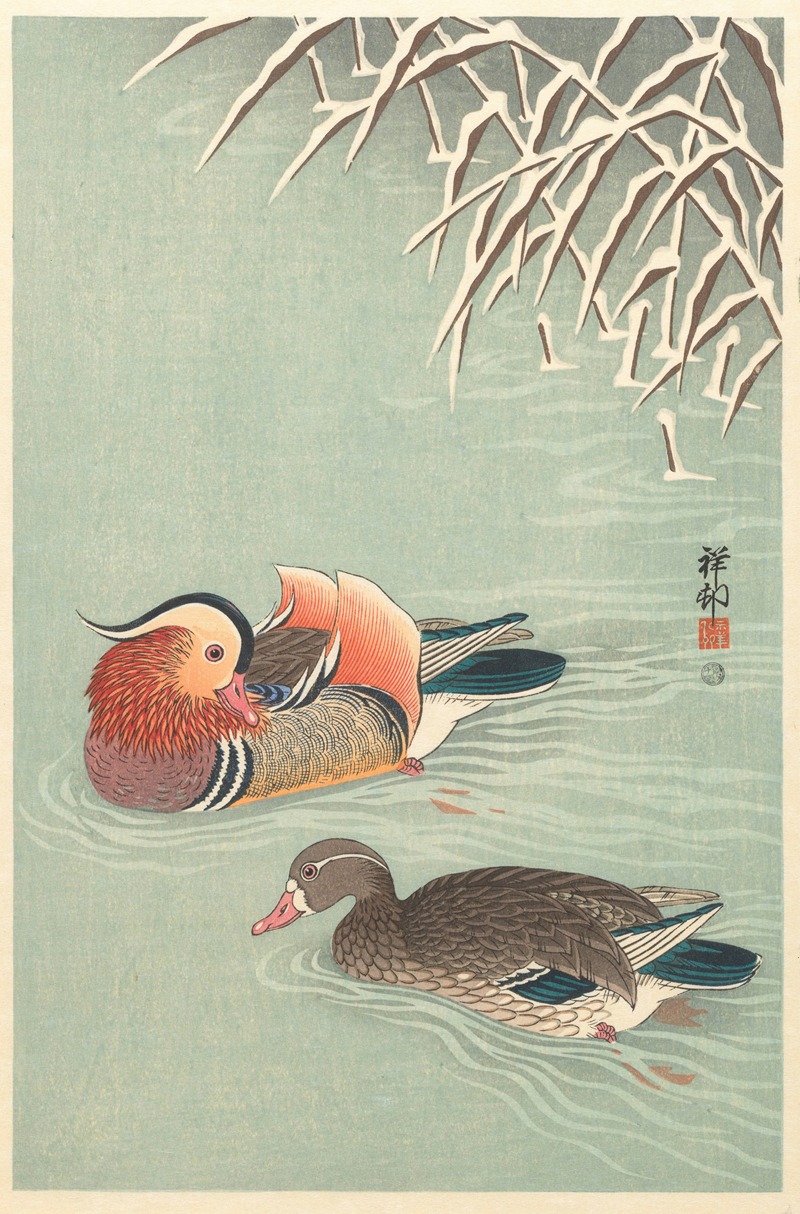
Mandarin ducks
A hand-painted replica of Ohara Koson’s masterpiece Mandarin ducks, meticulously crafted by professional artists to capture the true essence of the original. Each piece is created with museum-quality canvas and rare mineral pigments, carefully painted by experienced artists with delicate brushstrokes and rich, layered colors to perfectly recreate the texture of the original artwork. Unlike machine-printed reproductions, this hand-painted version brings the painting to life, infused with the artist’s emotions and skill in every stroke. Whether for personal collection or home decoration, it instantly elevates the artistic atmosphere of any space.
Ohara Koson (1877–1945) was a Japanese painter and print designer of the late 19th and early 20th centuries, known for his exquisite kachō-ga (bird-and-flower) prints. One of his notable works is "Mandarin Ducks," which exemplifies his skill in capturing the delicate beauty of nature.
The "Mandarin Ducks" print by Ohara Koson features a pair of these colorful birds, which are often associated with love and fidelity in East Asian culture. Mandarin ducks are known for their striking plumage, particularly the males, which display vibrant colors and intricate patterns. Koson’s depiction of these birds is both realistic and artistically stylized, showcasing his ability to blend natural observation with artistic expression.
Koson was part of the shin-hanga (new prints) movement, which sought to revitalize traditional Japanese woodblock printing by incorporating Western elements such as perspective and shading. This movement emerged in the early 20th century as a response to the decline of ukiyo-e (pictures of the floating world) and aimed to appeal to both domestic and international audiences. Koson’s work, including "Mandarin Ducks," reflects this blend of traditional and modern influences.
In "Mandarin Ducks," Koson employs a delicate color palette and fine lines to render the birds and their surroundings. The composition is carefully balanced, with the ducks positioned in a way that draws the viewer’s eye across the print. The background often features subtle elements of water and foliage, creating a serene and harmonious scene that emphasizes the tranquility of nature.
Koson’s attention to detail is evident in the intricate patterns of the ducks’ feathers and the naturalistic portrayal of their postures. This meticulous approach is characteristic of his work and contributes to the overall lifelike quality of the print. The use of light and shadow adds depth and dimension, enhancing the three-dimensional effect of the composition.
The "Mandarin Ducks" print is part of a larger body of work by Koson that includes various bird-and-flower subjects. His prints were widely appreciated both in Japan and abroad, particularly in the United States and Europe, where there was a growing interest in Japanese art during the early 20th century. Koson’s prints were often sold through art dealers and exhibited in galleries, contributing to his international reputation.
Koson’s legacy as a master of kachō-ga continues to be recognized today. His prints are held in numerous museum collections around the world, including the Museum of Fine Arts in Boston and the British Museum in London. The "Mandarin Ducks" print remains a testament to his skill and artistry, capturing the timeless beauty of nature through the medium of woodblock printing.
Overall, Ohara Koson’s "Mandarin Ducks" is a fine example of the shin-hanga movement and a reflection of his dedication to the art of woodblock printing. The print’s delicate beauty and meticulous detail continue to captivate viewers, making it a cherished piece in the history of Japanese art.





